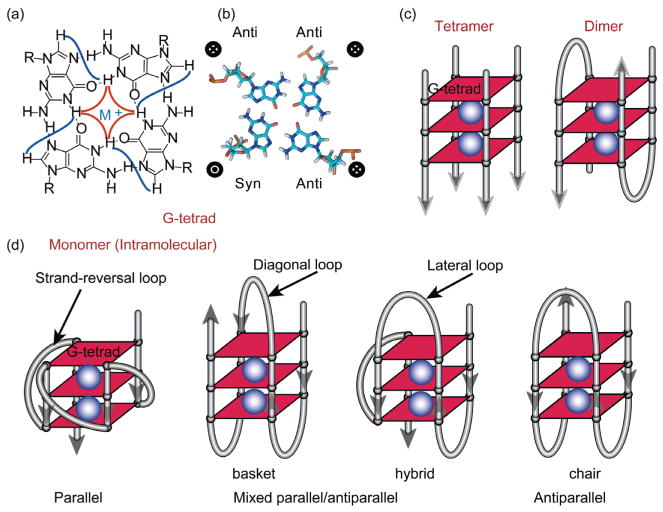Figure 1.
(a) Schematic illustration of a G-tetrad, four guanine bases arranged in a square plane with Hoogsteen hydrogen bonding. The H1–H1 and H1–H8 connectivity that are notable in NOESY experiments are shown in red and blue respectively; (b) a G-tetrad structure. Guanines in a G-tetrad may adopt either syn or anti glycosidic conformation; the guanines from parallel G-strands adopt the same glycosidic conformation and the guanines from antiparallel G-strands adopt opposing glycosidic conformations; (c) schematic tetrameric and dimeric G-quadruplexes with three G-tetrads; (d) examples of monomeric (intramolecular) G-quadruplexes with different folding structures and loop conformations. Monovalent cations (K+ or Na+, shown as blue spheres), are required to stabilize G-quadruplexes by coordinating with the O6 atoms of the adjacent G-tetrad planes.

